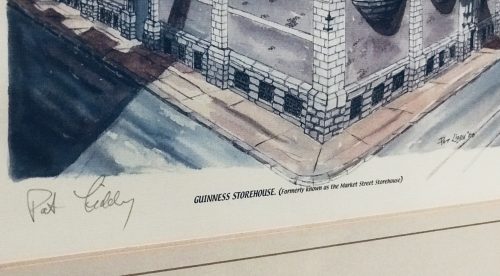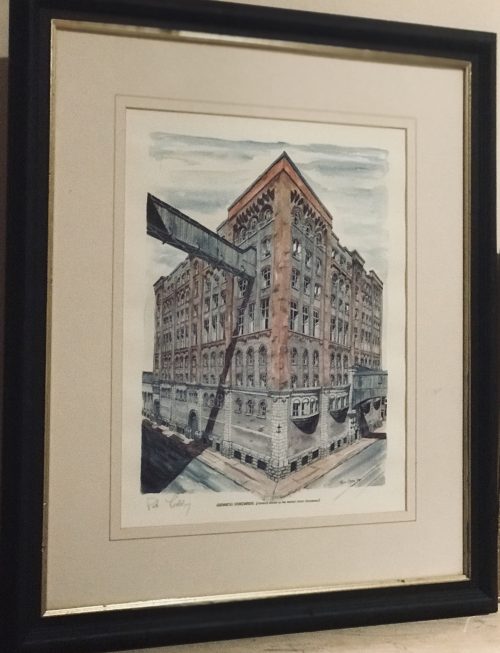Early years: 1982–1986
In 1982, James Fearnley (accordion), who had been a guitarist with The Nips, joined MacGowan, Stacy, and Finer, forming the band, then known as Pogue Mahone. The new group played their first gig at The Pindar of Wakefield on 4 October 1982.They then appeared at Gossips in Dean Street Soho on Thursday 3 November 1983 with Trash Trash Trash and The Stingrays. They later added Cait O'Riordan (bass) and Andrew Ranken (drums). The band played London pubs and clubs,and released a single, "Dark Streets of London",on their own, self-named label, gaining a small reputation – especially for their live performances. They came to the attention of the media and Stiff Records when they opened for The Clash on their 1984 tour.Shortening their name to "The Pogues" (partly due to BBC censorship following complaints from Gaelic speakers in Scotland) they released their first album Red Roses for Me on Stiff Records that October. The band gained more attention when the UK Channel 4's influential music show The Tube made a video of their version of "Waxie's Dargle" for the show. The performance, featuring Spider Stacy repeatedly smashing himself over the head with a beer tray, became a favourite with the viewers, but Stiff Records refused to release it as a single, feeling it was too late for it to help Red Roses for Me. Nevertheless, it remained a favourite request for the show for many years. With the aid of producer Elvis Costello, they recorded the follow-up, Rum Sodomy & the Lash, in 1985 during which time guitarist Philip Chevron joined. The album title is a famous comment falsely attributed to Winston Churchill who was supposedly describing the "true" traditions of the British Royal Navy. The album cover featured The Raft of the Medusa, with the faces of the characters in Théodore Géricault's painting replaced with those of the band members. The album shows the band moving away from covers to original material. Shane MacGowan came into his own as a songwriter with this disc, offering up poetic story-telling, such as "The Sick Bed of Cúchulainn" and "The Old Main Drag", as well as definitive interpretations of Ewan MacColl's "Dirty Old Town" and Eric Bogle's "And the Band Played Waltzing Matilda" (this had previously been covered by Shane's fellow punk contemporaries Skids in 1981). The band failed to take advantage of the momentum created by the strong artistic and commercial success of their second album. They first refused to record another album (offering up the four-track EP Poguetry in Motion instead); O'Riordan married Costello and left the band, to be replaced by bassist Darryl Hunt, formerly of Plummet Airlines and Pride of the Cross; and they added a multi-instrumentalist in Terry Woods, formerly of Steeleye Span. Looming over the band at this period (as throughout their entire career) was the increasingly erratic behaviour of their vocalist and principal songwriter, Shane MacGowan. Their record label, Stiff Records, went bankrupt soon after the 1987 release of the single "The Irish Rover" (with The Dubliners). Members of the band, including O'Riordan, acted in Alex Cox's Straight to Hell, and five songs by the band were included on the film's soundtrack album.Mainstream success and break-up: 1987–1996
The band remained stable enough to record If I Should Fall from Grace with God with its Christmas hit duet with Kirsty MacColl "Fairytale of New York". "Fairytale of New York" was released as a single in 1987 and reached No. 1 in the Irish charts and No. 2 in the British charts over Christmas (the time of peak sales). The song has become a festive classic in the UK and Ireland over the years, and was voted the best Christmas song of all time three years running in 2004,2005,and 2006 in polls by music channel VH1 UK, despite not achieving Christmas Number One when it was released. It was also voted as the 27th greatest song never to reach UK#1 in another VH1 poll, and also voted as the 84th greatest song of all time by BBC Radio 2 listeners in the "Sold on Song" top 100 poll. In 2007 the record was briefly censored by the BBC because of the word "faggot" being deemed potentially offensive to homosexual people. Following protests from listeners, including the mother of Kirsty MacColl, the censorship was lifted. The band was at the peak of its commercial success, with both albums making the top 5 in the UK (numbers 3 and 5 respectively), but MacGowan was increasingly unreliable. He failed to turn up for the opening dates of their 1988 tour of America, and prevented the band from promoting their 1990 album Hell's Ditch, so in 1991 the band sacked him. Vocal duties were for a time handled by Joe Strummer. Spider Stacy took over permanently after Strummer left in the winter of 1991. After Strummer's departure, the remaining seven Pogues recorded in 1993 Waiting for Herb, which contained the band's third and final top twenty single, "Tuesday Morning", which became their best-selling single internationally. Terry Woods and James Fearnley then left the band and were replaced by David Coulter and James McNally respectively. Within months of their departures, ill health forced Phil Chevron to leave the band; he was replaced by his former guitar technician, Jamie Clarke. This line-up recorded the band's seventh and final studio album, Pogue Mahone. The album was a commercial failure, and, following Jem Finer's decision to leave the band in 1996, the remaining members decided it was time to call it quits. According to Shane MacGowan, among the reasons of the break-up was disagreement concerning the political orientation of his songs, the band not wanting to sing too obvious pro-Republican songs – though some of their previous songs were already politically engaged: for instance, Streams of Whiskey is about the poet and IRA member Brendan Behan. Soon after the break-up Shane MacGowan recorded a song titled Paddy Public Enemy Number One as a tribute to the Republican leader Dominic McGlinchey, a former leader of the INLA killed a few years before.Post-breakup
After the Pogues's break-up, the three remaining long-term members (Spider Stacy, Andrew Ranken and Darryl Hunt) played together briefly as The Vendettas. They played mainly new Stacy-penned tracks, though Darryl Hunt also contributed songs, and the band's live set included a few Pogues songs. First Ranken then Hunt left the band, the latter going on to become singer/songwriter in an indie band called Bish, whose self-titled debut album was released in 2001. Ranken has gone on to play with a number of other bands, including Kippers, The Municipal Waterboard and, most recently, The Mysterious Wheels. In addition to The Vendettas, who Stacy freely admits lost all attraction when the Pogues reformed, Spider continued to write and record music with various bands, including the James Walbourne, Filthy Thieving Bastards, Dropkick Murphys and Astral Social Club. Shane MacGowan founded Shane MacGowan and The Popes in 1992. They released two studio albums and broke up in 2002. His autobiography A Drink With Shane MacGowan, co-written with his journalist girlfriend Victoria Mary Clarke, was released in 2001. Jem Finer went into experimental music, playing a big part in a project known as "Longplayer", a piece of music designed to play continuously for 1,000 years without repeating itself. In 2005, Finer released the album Bum Steerwith DB Bob (as DM Bob and Country Jem). James Fearnley moved to the United States shortly before leaving the Pogues. He was a member of The Low And Sweet Orchestra and later the Cranky George Trio. Philip Chevron reformed his former band The Radiators, which briefly included former Pogue Cait O'Riordan. Terry Woods formed The Bucks with Ron Kavana, releasing the album Dancin' To The Ceili Band in 1994. Later, he formed The Woods Band, releasing the album Music From The Four Corners of Hell in 2002.Reunion: 2001–2014
The band, including MacGowan, re-formed for a Christmas tour in 2001 and performed nine shows in the UK and Ireland in December 2004. In 2002 Q magazine named the Pogues as one of the "50 Bands To See Before You Die". In July 2005, the band – again including MacGowan – played at the annual Guilfest festival in Guildford before flying out to Japan where they played three dates. Japan is the last place they all played together before MacGowan was originally sacked in 1991, and they have a strong following there. They played a date in Spain in early September. The reunited Pogues played dates in the UK with support from the Dropkick Murphys in late 2005, and re-released their 1987 Christmas classic "Fairytale of New York" on 19 December, which went straight in at No. 3 in the UK Singles charts on Christmas Day 2005, showing the song's enduring popularity. On 22 December 2005 the BBC broadcast a live performance (recorded the previous week) on the Jonathan RossChristmas show with Katie Melua filling in for the late Kirsty MacColl, the first time the band had played the song live on television. The following week they performed live on the popular music show CD:UK. Shane MacGowan wrote a blog for The Guardian in 2006, detailing his thoughts on the current tour. The band was awarded the lifetime achievement award at the annual Meteor Ireland Music Awards in February 2006. In March 2006, the band played their first US dates with Shane in over 15 years. The band played a series of sold-out concerts in Washington, D.C., Atlantic City, Boston, and New York. Later they played a series of highly acclaimed and sold-out gigs during mid-October 2006 in San Francisco, Las Vegas, and Los Angeles, and toured Glasgow, Manchester, Birmingham, London, Dublin, and Nottingham in mid-December 2006. They began a second US tour in March 2007, once again to coincide (and conclude) with a Roseland Ballroom New York City show on Saint Patrick's Day. 2007 has proved to be the most prolific year of touring since the reunion. A tour of the west coast of America and eleven dates in the UK in December complement the headlining festival appearances made in the summer across Europe (Sweden, Belgium and Spain). They continue to be in huge demand, often selling out very large venues, despite criticism of selling out, and claims that arenas and festivals do not suit the band's sound.
The Pogues on 1 August 2010 in Amsterdam

The Pogues 2011 in Munich, Philip Chevron, James Fearnley, Andrew Ranken, Shane MacGowan, Darryl Hunt, Spider Stacy, Jem Finer not on photo Terry Woods
Members
- Spider Stacy – vocals, tin whistle (1982–1996, 2001–2014)
- Jem Finer – banjo, mandola, saxophone, hurdy-gurdy, guitar, vocals (1982–1996, 2001–2014)
- James Fearnley – accordion, mandolin, piano, guitar (1982–1993, 2001–2014)
- Shane MacGowan – vocals, guitar, banjo, bodhrán (1982–1991, 2001–2014)
- Andrew Ranken – drums, percussion, harmonica, vocals (1982–1996, 2001–2014)
- Darryl Hunt – bass guitar (1986–1996, 2001–2014)
- Terry Woods – mandolin, cittern, concertina, guitar, vocals (1986–1993, 2001–2014)
- Cait O'Riordan – bass, vocals (1982–1986, 2004)
- Philip Chevron – guitar, vocals (1985–1994, 2001–2013; his death)
- Joe Strummer – vocals, guitar (1991–1992; also replaced an ailing Phil Chevron for a US tour in 1987; died 2002)
- Dave Coulter – mandolin, violin, ukulele, percussion (1993–1996)
- James McNally – accordion, whistles, percussion (1993–1996)
- Jamie Clarke – guitar, vocals (1994–1996)
Timeline






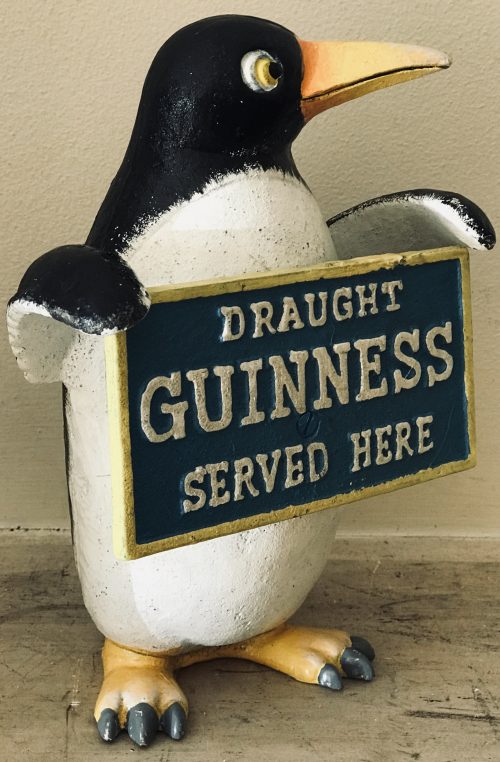
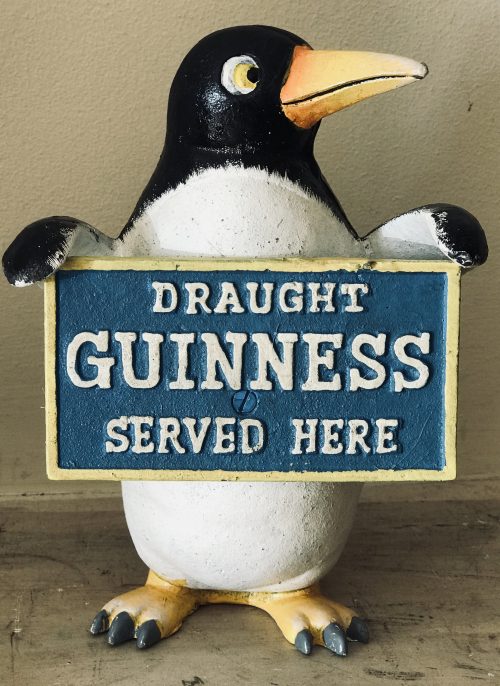




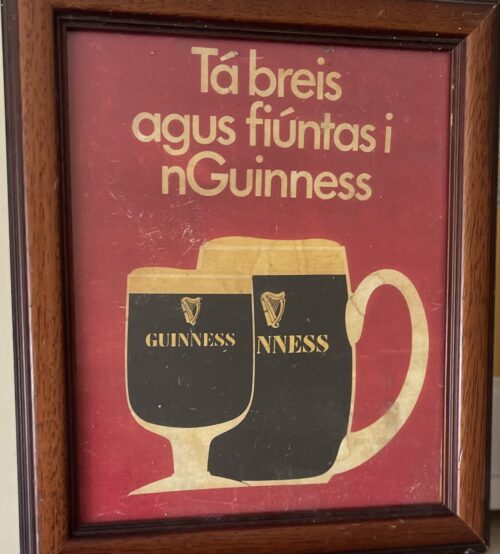
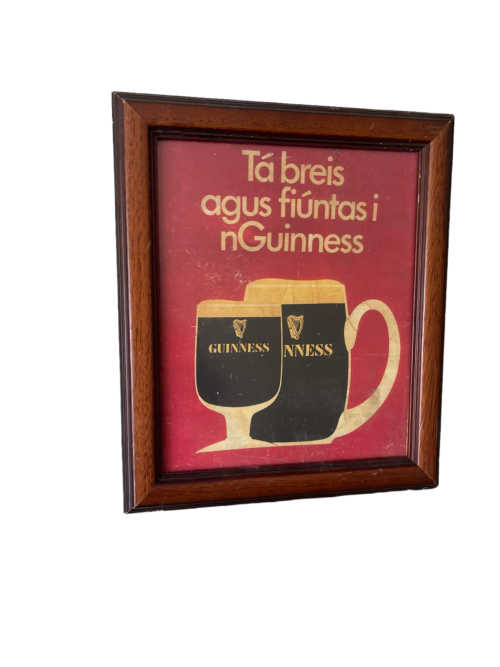


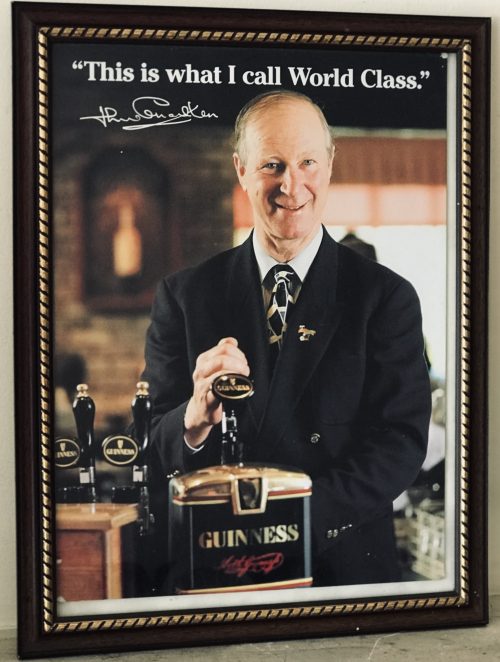






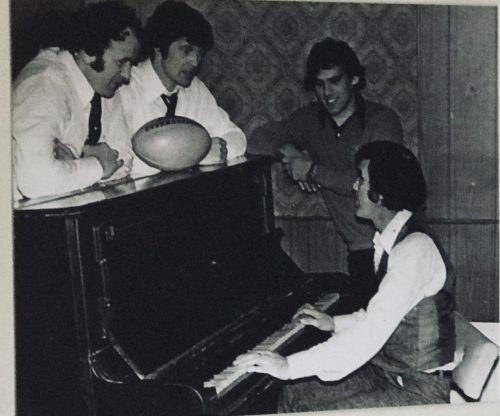
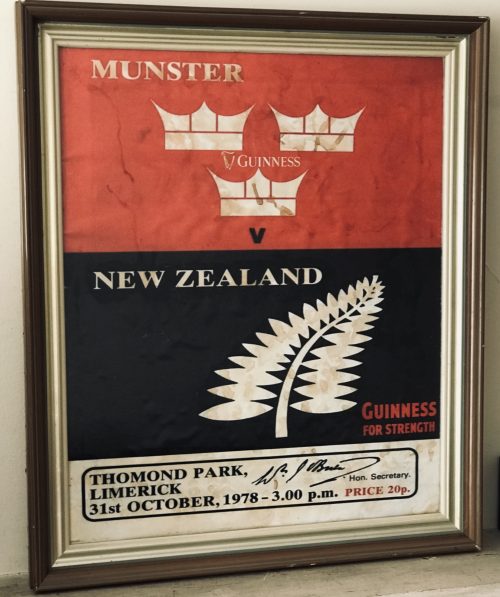

 Many years on, Stuart Wilson vividly recalled the Dennison tackles and spoke about them in remarkable detail and with commendable honesty: “The move involved me coming in from the blind side wing and it had been working very well on tour. It was a workable move and it was paying off so we just kept rolling it out. Against Munster, the gap opened up brilliantly as it was supposed to except that there was this little guy called Seamus Dennison sitting there in front of me.
“He just basically smacked the living daylights out of me. I dusted myself off and thought, I don’t want to have to do that again. Ten minutes later, we called the same move again thinking we’d change it slightly but, no, it didn’t work and I got hammered again.”
The game was 11 minutes old when the most famous try in the history of Munster rugby was scored.
Tom Kiernan recalled: “It came from a great piece of anticipation by Bowen who in the first place had to run around his man to get to Ward’s kick ahead. He then beat two men and when finally tackled, managed to keep his balance and deliver the ball to Cantillon who went on to score. All of this was evidence of sharpness on Bowen’s part.”
Very soon it would be 9-0. In the first five minutes, a towering garryowen by skipper Canniffe had exposed the vulnerability of the New Zealand rearguard under the high ball. They were to be examined once or twice more but it was from a long range but badly struck penalty attempt by Ward that full-back Brian McKechnie knocked on some 15 yards from his line and close to where Cantillon had touched down a few minutes earlier. You could sense White, Whelan, McLoughlin and co in the front five of the Munster scrum smacking their lips as they settled for the scrum. A quick, straight put-in by Canniffe, a well controlled heel, a smart pass by the scrum-half to Ward and the inevitability of a drop goal. And that’s exactly what happened.
The All Blacks enjoyed the majority of forward possession but the harder they tried, the more they fell into the trap set by the wily Kiernan and so brilliantly carried out by every member of the Munster team.
The tourists might have edged the line-out contest through Andy Haden and Frank Oliver but scrum-half Mark Donaldson endured a miserable afternoon as the Munster forwards poured through and buried him in the Thomond Park turf.
As the minutes passed and the All Blacks became more and more unsure as to what to try next, the Thomond Park hordes chanted “Munster-Munster–Munster” to an ever increasing crescendo until with 12 minutes to go, the noise levels reached deafening proportions.
And then ... a deep, probing kick by Ward put Wilson under further pressure. Eventually, he stumbled over the ball as it crossed the line and nervously conceded a five-metre scrum. The Munster heel was disrupted but the ruck was won, Tucker gained possession and slipped a lovely little pass to Ward whose gifted feet and speed of thought enabled him in a twinkle to drop a goal although surrounded by a swarm of black jerseys. So the game entered its final 10 minutes with the All Blacks needing three scores to win and, of course, that was never going to happen.
Munster knew this, so, too, did the All Blacks. Stu Wilson admitted as much as he explained his part in Wardy’s second drop goal: “Tony Ward banged it down, it bounced a little bit, jigged here, jigged there, and I stumbled, fell over, and all of a sudden the heat was on me. They were good chasers. A kick is a kick — but if you have lots of good chasers on it, they make bad kicks look good. I looked up and realised — I’m not going to run out of here so I just dotted it down. I wasn’t going to run that ball back out at them because five of those mad guys were coming down the track at me and I’m thinking, I’m being hit by these guys all day and I’m looking after my body, thank you. Of course it was a five-yard scrum and Ward banged over another drop goal. That was it, there was the game”.
The final whistle duly sounded with Munster 12 points ahead but the heroes of the hour still had to get off the field and reach the safety of the dressing room. Bodies were embraced, faces were kissed, backs were pummelled, you name it, the gauntlet had to be walked. Even the All Blacks seemed impressed with the sense of joy being released all about them. Andy Haden recalled “the sea of red supporters all over the pitch after the game, you could hardly get off for the wave of celebration that was going on. The whole of Thomond Park glowed in the warmth that someone had put one over on the Blacks.”
Controversially, the All Blacks coach, Jack Gleeson (usually a man capable of accepting the good with the bad and who passed away of cancer within 12 months of the tour), in an unguarded (although possibly misunderstood) moment on the following day, let slip his innermost thoughts on the game.
“We were up against a team of kamikaze tacklers,” he lamented. “We set out on this tour to play 15-man rugby but if teams were to adopt the Munster approach and do all they could to stop the All Blacks from playing an attacking game, then the tour and the game would suffer.”
It was interpreted by the majority of observers as a rare piece of sour grapes from a group who had accepted the defeat in good spirit and it certainly did nothing to diminish Munster respect for the All Blacks and their proud rugby tradition.
Many years on, Stuart Wilson vividly recalled the Dennison tackles and spoke about them in remarkable detail and with commendable honesty: “The move involved me coming in from the blind side wing and it had been working very well on tour. It was a workable move and it was paying off so we just kept rolling it out. Against Munster, the gap opened up brilliantly as it was supposed to except that there was this little guy called Seamus Dennison sitting there in front of me.
“He just basically smacked the living daylights out of me. I dusted myself off and thought, I don’t want to have to do that again. Ten minutes later, we called the same move again thinking we’d change it slightly but, no, it didn’t work and I got hammered again.”
The game was 11 minutes old when the most famous try in the history of Munster rugby was scored.
Tom Kiernan recalled: “It came from a great piece of anticipation by Bowen who in the first place had to run around his man to get to Ward’s kick ahead. He then beat two men and when finally tackled, managed to keep his balance and deliver the ball to Cantillon who went on to score. All of this was evidence of sharpness on Bowen’s part.”
Very soon it would be 9-0. In the first five minutes, a towering garryowen by skipper Canniffe had exposed the vulnerability of the New Zealand rearguard under the high ball. They were to be examined once or twice more but it was from a long range but badly struck penalty attempt by Ward that full-back Brian McKechnie knocked on some 15 yards from his line and close to where Cantillon had touched down a few minutes earlier. You could sense White, Whelan, McLoughlin and co in the front five of the Munster scrum smacking their lips as they settled for the scrum. A quick, straight put-in by Canniffe, a well controlled heel, a smart pass by the scrum-half to Ward and the inevitability of a drop goal. And that’s exactly what happened.
The All Blacks enjoyed the majority of forward possession but the harder they tried, the more they fell into the trap set by the wily Kiernan and so brilliantly carried out by every member of the Munster team.
The tourists might have edged the line-out contest through Andy Haden and Frank Oliver but scrum-half Mark Donaldson endured a miserable afternoon as the Munster forwards poured through and buried him in the Thomond Park turf.
As the minutes passed and the All Blacks became more and more unsure as to what to try next, the Thomond Park hordes chanted “Munster-Munster–Munster” to an ever increasing crescendo until with 12 minutes to go, the noise levels reached deafening proportions.
And then ... a deep, probing kick by Ward put Wilson under further pressure. Eventually, he stumbled over the ball as it crossed the line and nervously conceded a five-metre scrum. The Munster heel was disrupted but the ruck was won, Tucker gained possession and slipped a lovely little pass to Ward whose gifted feet and speed of thought enabled him in a twinkle to drop a goal although surrounded by a swarm of black jerseys. So the game entered its final 10 minutes with the All Blacks needing three scores to win and, of course, that was never going to happen.
Munster knew this, so, too, did the All Blacks. Stu Wilson admitted as much as he explained his part in Wardy’s second drop goal: “Tony Ward banged it down, it bounced a little bit, jigged here, jigged there, and I stumbled, fell over, and all of a sudden the heat was on me. They were good chasers. A kick is a kick — but if you have lots of good chasers on it, they make bad kicks look good. I looked up and realised — I’m not going to run out of here so I just dotted it down. I wasn’t going to run that ball back out at them because five of those mad guys were coming down the track at me and I’m thinking, I’m being hit by these guys all day and I’m looking after my body, thank you. Of course it was a five-yard scrum and Ward banged over another drop goal. That was it, there was the game”.
The final whistle duly sounded with Munster 12 points ahead but the heroes of the hour still had to get off the field and reach the safety of the dressing room. Bodies were embraced, faces were kissed, backs were pummelled, you name it, the gauntlet had to be walked. Even the All Blacks seemed impressed with the sense of joy being released all about them. Andy Haden recalled “the sea of red supporters all over the pitch after the game, you could hardly get off for the wave of celebration that was going on. The whole of Thomond Park glowed in the warmth that someone had put one over on the Blacks.”
Controversially, the All Blacks coach, Jack Gleeson (usually a man capable of accepting the good with the bad and who passed away of cancer within 12 months of the tour), in an unguarded (although possibly misunderstood) moment on the following day, let slip his innermost thoughts on the game.
“We were up against a team of kamikaze tacklers,” he lamented. “We set out on this tour to play 15-man rugby but if teams were to adopt the Munster approach and do all they could to stop the All Blacks from playing an attacking game, then the tour and the game would suffer.”
It was interpreted by the majority of observers as a rare piece of sour grapes from a group who had accepted the defeat in good spirit and it certainly did nothing to diminish Munster respect for the All Blacks and their proud rugby tradition.

